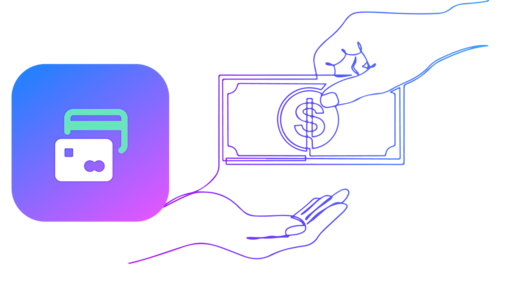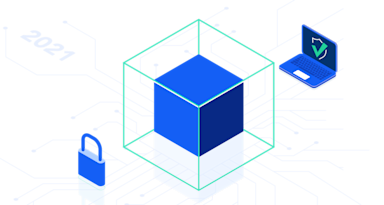Do you own your data?
Your journey of payments transformation and innovation starts and ends with data ownership. Access to your data is essential.
Larger banks and card issuers know this; they understand that data ownership is the life blood of their business. As a result, these institutions have built the infrastructure needed to hold mass amounts of data. Banks and card issuers have traditionally used these large sets of data to help them manage everything from credit risk to regulatory risk.
More recently, banks and card issuers realized that the value of data goes beyond managing risk. Data can help with product innovation to ensure that the right products and features are being developed to help:
- Reduce friction in the customer experience
- Grow the business by delivering products that meet customer demand
- Identify the right segments to maximize acquisition
Some of the most sensitive data that banks and card issuers deal with is payment data. It has to adhere to compliance regulations so is often turned over to management by third party vendors. But payment data is incredibly valuable, and in order to tap into the value of your payment data, you need to have easy access to it. And to easily access your data, you need to own your data. If you don’t currently own the data you generate from your payment products or services, perhaps it’s time to reconsider your options.
Data ownership of your payments data (particularly card data) is especially important because no other bank or financial product will generate as much insightful data about your customers as your card payment products.
Data Ownership Leads to Insights
In the realm of payments there are two types of data. There is data that is used for validation and there is payment data that drives your business logic. Validation data, such as PAN, CVV, and expiration date, is only used to ensure that the basic account information submitted for the payment matches the cardholder on the system of record and is authenticated. Once an account is authenticated, the validation data utility has served its purpose for that interaction. Now the payment request is moved to the decisioning stage.
During the payment decisioning stage, the remaining payment data is used to drive the business logic to drive approval or decline of the transaction. As you accumulate this type of payment data over time, you build a valuable set of data that provides insight into your customer base and more specifically each individual customer. As your data set grows, you are able to form a behavioral profile of each of your customers and portfolio.
With this profile, you will be able to understand how your customers interact with your products and services over time and against both internal and external benchmarks.
Insights Lead to Innovating the Right Products and Services
Once you have these insights, you will have a better understanding of what your customer’s behavior and possible needs are. As a result, it will help you better shape your product and service offerings. In some cases, you may need to introduce new features and functionalities. In other cases, you may need to introduce an entirely new product.
These insights will help you address the following questions:
- What new features or products do I need to build?
- When should I build these features or products?
- Who should I build these features or products for?
- Where should I deploy these features and products?
- How will my customers interact with these new features and procuts?
As you start gathering more insights, you can start to create more bespoke offerings by segmenting your customer base. For example, Chase Credit services has created more than 20 different types of credit card products to target specific segments, to maximize its top of wallet status. These credit card products target their various customer segments whether it’s by an affinity, purchase behavior, affluence, etc. As a result, Chase is able to service its multiple customer segments resulting in the largest credit card issue in North America.
American Express caters to a smaller set of customer segments. They leverage the insights to understand how their cardholder’s behavior shifts over time.
As a result, American Express is making slight changes here and there to ensure that their products are evolving with these behavior shifts. Over the last 3 years, American Express have kept their same set of charge cards, but have made 2 changes to their features to ensure they meet the changing behavior of their customers. First they shifted away from airline and flying based benefits to more hotel based benefits.
Second, they introduced “Pay Your Way” in response to the installment payment providers. Pay Your Way allows their cardholders to take any purchase and convert it into an easy installment plan of 3, 6, or 12 months, giving them optionality on how they want to pay down their purchases.
Access to all these insights to help either Chase or American Express roll new features and functionalities would not be possible with data. Their easy access to data would not be made possible if data ownership was not a top priority for their business.
Even Smaller Data Sets Have Value
Have you been sold artificial intelligence and machine learning? In order for machine learning to be effective, the more data you have the more effective your machine learning algorithm will be. What is lost in all this is the importance of clean data. If you put garbage data in, you will get garbage insight out. In fact, I would say that clean data is more important than the volume of data. You can still extract value from your data even though you may not have great volumes of data. All you need is some simple intuition and the understanding that people act in herds and are creatures of habit.
Once you understand the notion of habits and herd mentality behavior, you can extract value from even one or transactions from a single cardholder. For example, if you notice a cardholder who makes 3 purchases in excess of $3,000 each within 60 days from merchants in the Home Improvement MCC code, you can assume that this is a-typical behavior. With this anomaly, you can also assume that this person may be doing some home improvement.
This payment behavior can trigger a soft credit bureau hit for this individual where you can cross sell a pre-qualified HELOC offer. This example shows how even a very small amount of card data can lead to opportunity.
The key takeaway in all this is that data ownership is still critical even if you don’t generate the same amount of data as a Chase or American Express. One can find value even in small sets of data.
Next time, we’ll take a look at how PCI can affect data ownership, the numbers behind the value of data ownership, tradeoffs in various PCI offerings, and more, so stay tuned for part 2!
This is part 1 of a 2 part series. Read Part 2 here.




